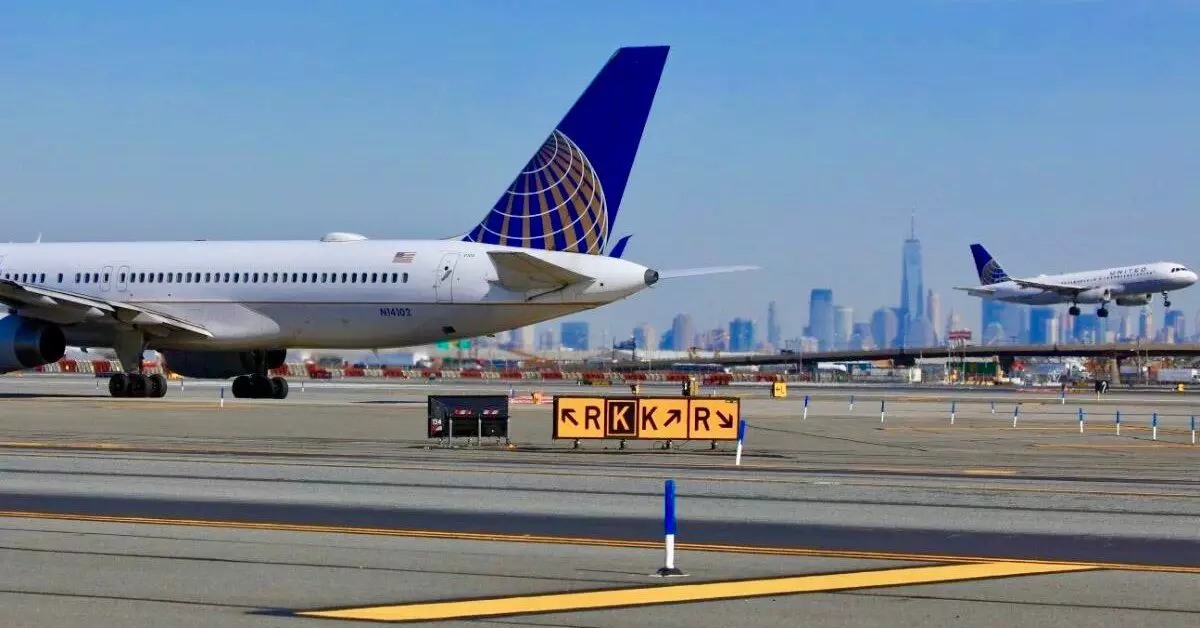In a troubling recurrence that underscores the fragility of our air traffic management systems, Newark Airport experienced its second radar outage in a mere two weeks. On a seemingly ordinary Friday morning, the radar responsible for coordinating flights to and from Newark went dark for a harrowing 90 seconds. This disruption, reminiscent of a previous incident earlier in April, triggered a chain reaction that resulted in nearly 300 flight delays and a spike in cancellations. The ramifications of such outages extend far beyond mere inconvenience for travelers; they reveal deep-rooted issues within our air traffic control infrastructure that demand urgent attention.
Staffing Shortages and Outdated Technology: A Dangerous Combination
With air traffic controllers already facing an overwhelming burden due to dwindling staff numbers—currently at just 22 in Newark, while ideally, there should be around 60—the situation is becoming untenable. Representative Josh Gottheimer did not mince words when addressing this staffing crisis, emphasizing the pressing need for more controllers to ensure efficient and safe airport operations. He pointed to the outdated technology as a contributing factor, citing old copper wiring that has been used since the 1980s. The fact that critical radar connections still rely on antiquated infrastructure raises alarm bells not just for Newark, but for the safety and efficiency of air travel across the nation.
The disconcerting nature of these technological failures cannot be overstated. When flight operations hinge on systems that are not merely old but are relics of a bygone era, one can only imagine the level of risk that pilots and passengers face in the skies above. The April 28 outage, which took place due to one of these aging copper wires being compromised, serves as a stark reminder that our air traffic management systems are in desperate need of revitalization.
The Government’s Response: Promises of Change
In response to these ongoing issues, Transportation Secretary Sean Duffy outlined a multibillion-dollar initiative aimed at overhauling our nation’s aging air traffic control technology. This ambitious plan includes installing over 4,600 high-speed connections and replacing 618 outdated radar systems nationwide. This substantial investment demonstrates a recognition of the urgent need for modernization, fueled in part by recent accidents that have shocked the public consciousness, including a tragic midair collision in January that claimed the lives of 67 individuals.
Yet, while such announcements are certainly welcome, skepticism remains about the speed and efficacy of implementation. Cumbersome bureaucracy and lengthy timelines often accompany public sector projects, leaving many to wonder how quickly these enhancements can actually translate into safer skies. It’s imperative that the momentum created by these recent revelations is not lost to the inertia that often stifles progress in governmental undertakings.
A Call for Comprehensive Solutions
It is evident that upgrading outdated systems will only be part of the solution. There is an urgent need for the industry to reassess its approach to air traffic management as a whole. This involves not just investing in new technology but also examining recruitment practices to attract and retain qualified personnel.
The simple reality, highlighted by Gottheimer’s remarks, is that we cannot afford to operate under a system that relies on technology and staff levels that are reminiscent of the early 1970s. The safety of countless travelers and the reputations of the airlines and airports are on the line, and half-measures will not suffice.
As we navigate through these tumultuous times in aviation, it is clear that the only path forward is one that embraces innovation and prioritizes safety above all else. We owe it not only to ourselves but also to future generations of travelers to revitalize our airspace and ensure that systems in place are equipped to meet the demands of modern air travel. Inaction is no longer an option. The time for a revolution in air traffic management has arrived.


Leave a Reply